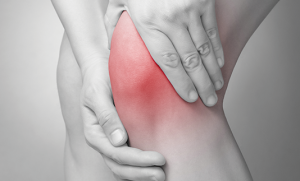What causes Rheumatoid Arthritis?
 In an RA flare, the body’s immune system attacks the joint capsule lining, called the synovial membrane. As the lining becomes inflamed, it is no longer able to produce the synovial fluid which works to lubricate joints and nourish the cartilage and bone ends. This means the joints stiffen and mobility becomes harder. With repetitive inflammation during flares, the cartilage and connective tissues become damaged and the joint capsule can lose its ability to stabilise the joints.
While the exact reason for the body getting confused and attacking its own cells at the joints is not well understood, it has been thought that hereditary factors may increase your chance of developing it. Other contributing factors include smoking and the female gender.
Flares often occur without an identifiable cause, though some causes have been attributed to stress, illness and injury. Some of those affected report that cold temperatures and weather affect their symptoms.
In an RA flare, the body’s immune system attacks the joint capsule lining, called the synovial membrane. As the lining becomes inflamed, it is no longer able to produce the synovial fluid which works to lubricate joints and nourish the cartilage and bone ends. This means the joints stiffen and mobility becomes harder. With repetitive inflammation during flares, the cartilage and connective tissues become damaged and the joint capsule can lose its ability to stabilise the joints.
While the exact reason for the body getting confused and attacking its own cells at the joints is not well understood, it has been thought that hereditary factors may increase your chance of developing it. Other contributing factors include smoking and the female gender.
Flares often occur without an identifiable cause, though some causes have been attributed to stress, illness and injury. Some of those affected report that cold temperatures and weather affect their symptoms.
What are the symptoms?
Rheumatoid Arthritis typically presents symmetrically. These flares come and go unpredictably and can affect many joints at once. The effects of RA progressively worsen and the joints incur more damage, until the joints are left with very little movement. This is why management has a big focus on slowing down the progression of symptoms and maintaining as much mobility as possible. Generally, symptoms include:- Swelling and inflammation in the joints
- Pain, tenderness and discomfort
- Stiffness and limited movement in the joints
- Rheumatoid nodules at the feet
- General fatigue
- Changes to the shape of the joints over time








